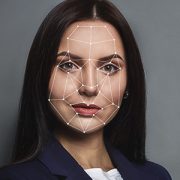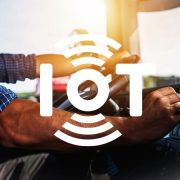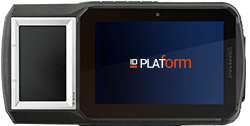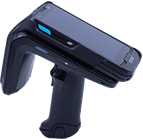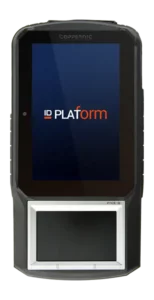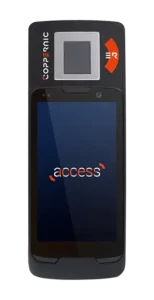This can be due to reasons such as:
- The locations of the control/verification/enrolment activities are not fixed, and their locations change regularly,
- The control/verification/enrolment activities are within a defined facility (airport, seaport, land border crossing, etc), but the equipment used will be required at multiple locations within the facility.
- The control/verification/enrolment functions are only required intermittently by personnel performing other functions (ie. Coast Guard) and devices need to be available as required.
- Implementing fixed workstations and equipment is impractical due to cost, infrastructure, or other physical limitations.
Within the context of Mobility, there are two classifications of biometric data collection devices¹ intended for these activities :
Mobile Devices and Portable Handheld Devices.
Mobile Devices for Law Enforcement, Border Control
Mobile devices are portable form factor devices that can be moved from one location to another location where they are to be used. They are often stored in a fixed location or vehicle and are accessed to be setup when required. Similar in style to consumer ‘PRO’ tablets or small form factor laptops, they are designed for use on one’s lap or other flat surfaces. These devices can be distinguished by their typical square, flat form factor for table or desktop use. They can support either a modern mobile operating system such as Android or a typical PC operating system such as Windows. They can be deployed in protective storage/carrying cases to accompany them to their work location and may also be deployed with separate accessories as necessary.
Portable Handheld Devices for Law Enforcement, Border Control
Portable handheld devices are meant for in-hand use and are typically defined by their size and ergonomics. Similar in style to consumer mobile phones or smaller tablets, they are designed to be useable for longer periods ‘in hand’ without fatigue. They are also designed to be ‘body-worn’ through accessories and holsters to enable the user to perform their duties and have the device accessible when needed. Portable Handheld devices will almost exclusively implement a mobile operating system such as Android, designed specifically for mobile connectivity and optimized battery life for an entire shift. Portable Handheld devices are typically referred to as simply ‘Handheld Devices’ but they can be found in many configurations depending on the available options (fingerprint readers, document capture, etc.)
‘Mixed’ Requirements
In some situations, Border Control systems may have requirements for both Mobile and Handheld devices. In those situations, it is important to consider a common device or platform approach to optimize development, deployment, and maintenance costs. Considering this, the typical approach is to utilize Handheld Devices for Border Control, with the understanding that such devices can typically meet all mobility requirements but not vice-versa.
Handheld devices for Border Control and Law Enforcement can be further defined if their usage is intended for Enrollment Applications (Such as the ID Platform FAP50) or only Verification and Control activities (such as the Access ER e-ID). We will talk about detailed requirements for handheld devices in a future blog post.
¹ EES Working Group on ICT Solutions for External Borders(sea/land) Report, 26/03/2019, ISBN 978-92-95217-54-6 (Link: https://www.eulisa.europa.eu/Newsroom/News/Pages/Report-ICT-Solutions-for-External-Borders.aspx
YOU HAVE A PROJECT ?
Let’s talk about it !
